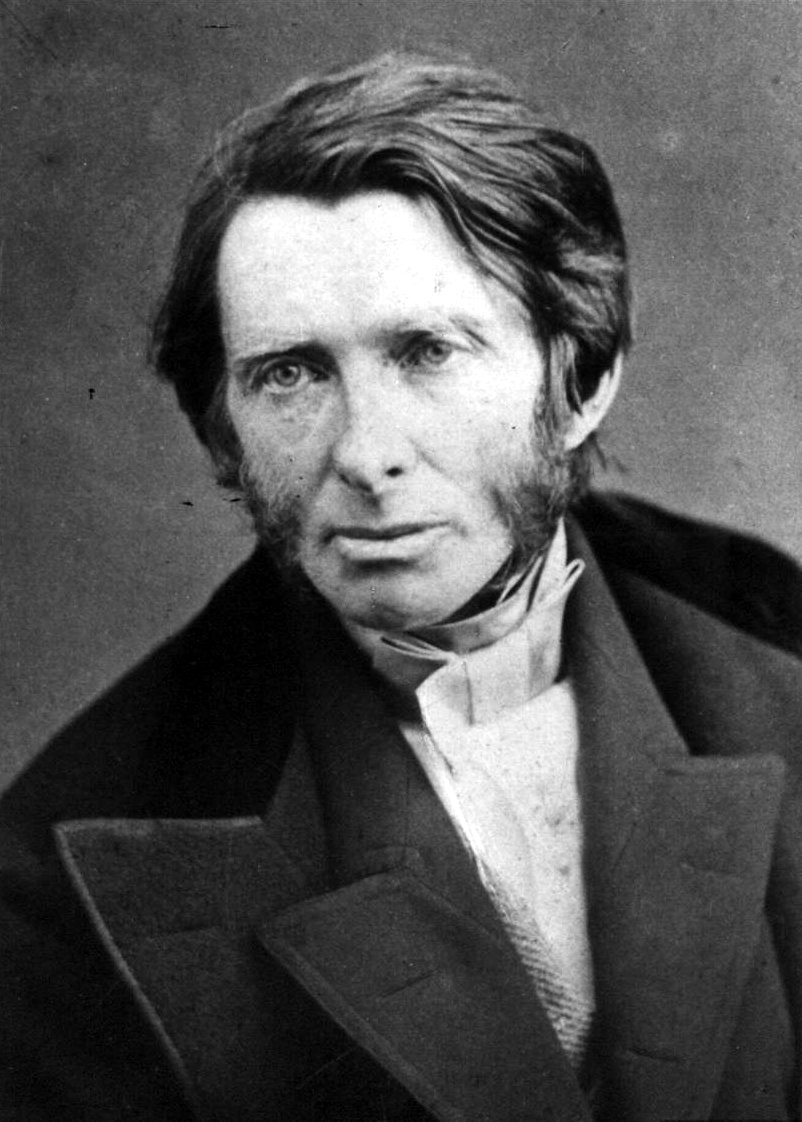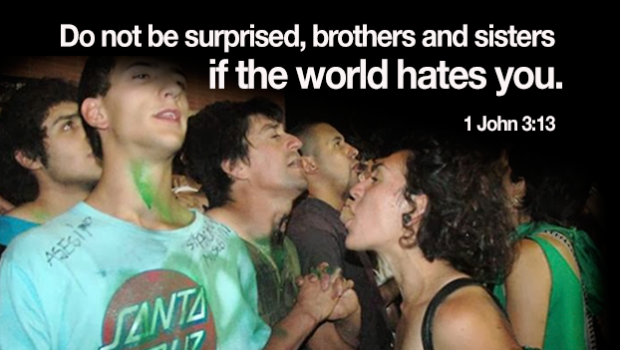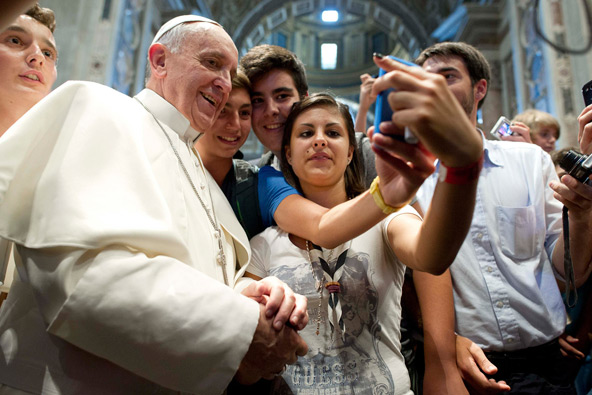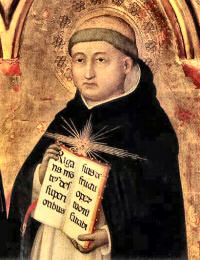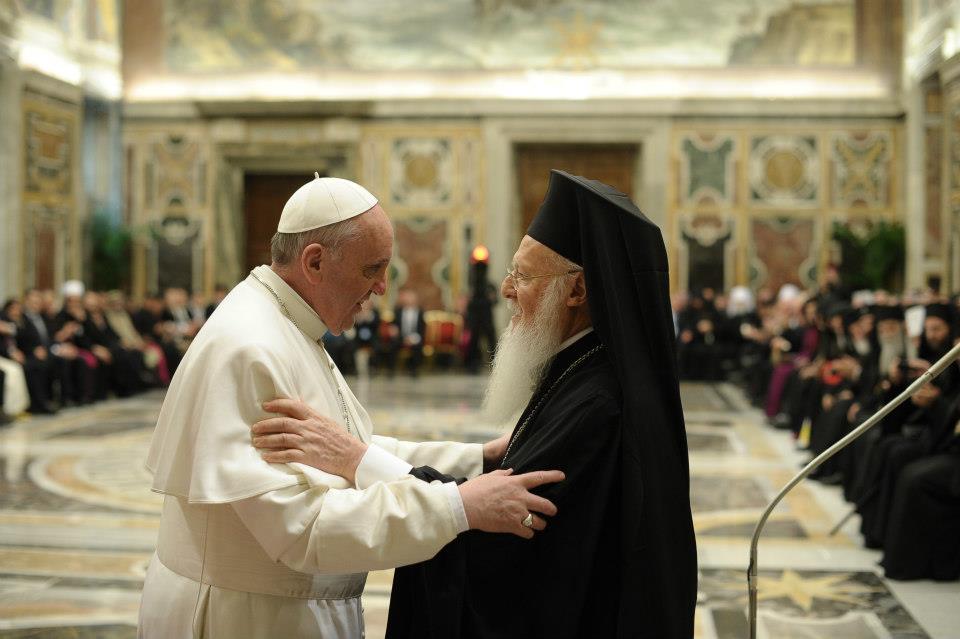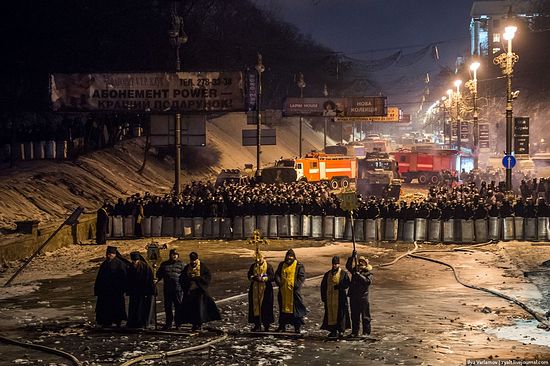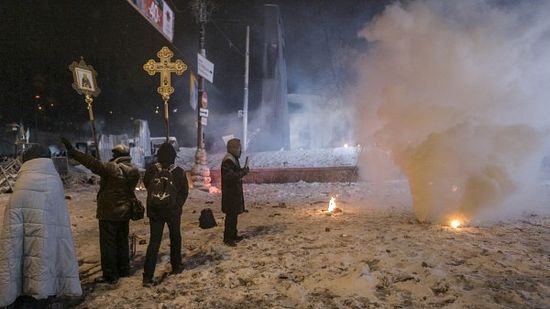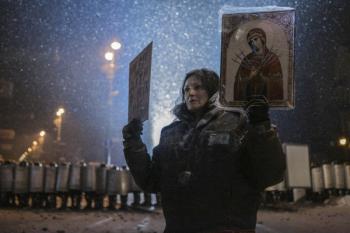![]()
David Cameron said publicly to Pope Benedict XVI and to the assembled Englishmen who were present to welcome the Pope, that Britain is a country of faith. At that moment, I was proud of being English, and was filled with hope that things might change. However, I shall never vote for that character until he shows by deeds that he really meant what he said. Till now, all the evidence points in the other direction. He has not only sent arms and support to factions that have bombed churches, killed Christians, and have made Christians second class citizens in their own countries, and he has remained silent before the greatest persecution of Christians for many centuries. It is a pity that the Christian families that have been persecuted are not homosexuals; just ordinary men, women and children. If they had been same-sex parents, then all the moral support that David Cameron and his ilk could give would have been freely offered; but they are, rather boringly, papa, mama and children: so they are left to die. The problem is that politicians have no principles; and that, even when they argue principles, they are really looking at the vote box. I shall vote for David Cameron only when he shows, by his actions, that he is what he claims to be, a man of faith.![]()
The world's most ancient Christian communities are being destroyed — and no one cares. Christians in the Middle East have been the victims of pogroms and persecution. Where's the outrage in the West?
By Michael Brendan Dougherty | January 23, 2014
Egyptian Coptic Christians mourn during a mass funeral in 2011.
.(REUTERS/Amr Abdallah Dalsh)
Like many Coptic Christians in Egypt, Ayman Nabil Labib had a tattoo of the cross on his wrist. And like 17-year-old men everywhere, he could be assertive about his identity. But in 2011, after Egypt's revolution, that kind of assertiveness could mean trouble.
Ayman's Arabic-language teacher told him to cover his tattoo in class. Instead of complying, the young man defiantly pulled out the cross that hung around his neck, making it visible. His teacher flew into a rage and began choking him, goading the young man's Muslim classmates by saying, "What are you going to do with him?"
Ayman's classmates then beat him to death. False statements were given to police, and two boys were taken into custody only after Ayman's terror-stricken family spoke out.
Ayman's suffering is not an isolated case in Egypt or the region.
The Arab Spring, and to a lesser extent the overthrow of Saddam Hussein, were touted as the catalysts for a major historic shift in the region. From Egypt to Syria to Iraq, the Middle East's dictatorships would be succeeded by liberal, democratic regimes. Years later, however, there is very little liberality or democracy to show. Indeed, what these upheavals have bequeathed to history is a baleful, and barely noticed legacy: The near-annihilation of the world's most ancient communities of Christians.
The persecution of Christians throughout the Middle East, as well as the silence with which it has been met in the West, are the subject of journalist Ed West's Kindle Single "The Silence of Our Friends." The booklet is a brisk and chilling litany of horrors: Discriminatory laws, mass graves, unofficial pogroms, and exile. The persecuted are not just Coptic and Nestorian Christians who have relatively few co-communicants in the West, but Catholics, Orthodox, and Protestants as well.
Throughout the Middle East the pattern is the same. Christians are murdered in mob violence or by militant groups. Their churches are bombed, their shops destroyed, and their homes looted. Laws are passed making them second-class citizens, and the majority of them eventually leave.
August 26, 2013: Bishop-General Macarius (right), a Coptic Orthodox leader, walks around the damaged Evangelical Church in Minya, south of Cairo. | (REUTERS/Louafi Larbi)
In Egypt, a rumor that a Muslim girl was dating a Christian boy led to the burning of multiple churches, and the imposition of a curfew on a local Christian population. Illiterate children were held in police custody for urinating in a trash heap, because an imam claimed that pages quoting the Koran were in the pile and had been desecrated. Again, the persecution resulted in Christian families leaving their homes behind.
In Syria, the situation is even worse. In June 2013, a cluster of Christian villages was totally destroyed. Friar Pierbattista Pizzaballa reported that "of the 4,000 inhabitants of the village of Ghassanieh... no more than 10 people remain."
Two Syrian bishops have been kidnapped by rebel groups. Militants expelled 90 percent of the Christians in the city of Homs. Patriarch Gregorios III of Antioch says that out of a population of 1.75 million, 450,000 Syrian Christians have simply fled their homes in fear.
In Iraq, the story is the same but more dramatic. According to West, between 2004 and 2011 the population of Chaldo-Assyrian Christians fell from over a million to as few as 150,000. In 2006, Isoh Majeed, who advocated the creation of a safe haven for Christians around Nineveh, was murdered in his home. The number of churches in Iraq has declined to just 57, from 300 before the invasion. The decline of Iraq's Christian population since the first Gulf War is roughly 90 percent, with most of the drop occurring since the 2003 invasion.
The U.S. and the U.K. bear some responsibility in this catastrophe, since they oversaw the creation of Iraq's postwar government and did little to protect minority faiths.
West's book touches on the clueless and callous behavior of Western governments in these episodes. U.S. reconstruction aid to Iraq is distributed according to Iraqi laws that discriminate against Christian Iraqis. The U.S. pours billions of foreign aid into Egypt, and yet the Christians in that country are not allowed to build churches (or even so much as repair toilets in them) without explicit permission from the head of state, almost never granted. Last September, the U.S and Britain attempted to make their support of Syrian rebel groups explicit and overt, but at the same time some of these militias were executing a pogrom against Christians.
A Christian shopkeeper in Ma'loula summed it up in a quote to the BBC: "Tell the EU and the Americans that we sent you Saint Paul 2,000 years ago to take you from the darkness, and you sent us terrorists to kill us."
In an email to The Week, Ed West says there are things America and its allies can and should do to aid persecuted Christians:
Western countries should make clear that our friendship, cooperation, aid, and help depends on: 1) Religious freedom, which includes the right to change or leave religions; 2) A secular law that treats all people the same. That was not the case in Mubarak's Egypt, which the U.S. helped to prop up with $500 million a year. That is not the case in Iraq, which under U.S. control instigated sharia into its constitution. That shouldn't be acceptable. In 2022, Qatar will host the World Cup, a country where death for apostasy is still on the statute books. Why aren't we all boycotting it?
The last request does put the plight of Middle Eastern Christians in global context. Western activists and media have focused considerable outrage at Russia's laws against "homosexual propaganda" in the lead-up to the 2014 Sochi Winter Olympics. It would only seem fitting that Westerners would also protest (or at the very least notice) laws that punish people with death for converting to Christianity.
December 25, 2008: Iraqi Christians attend Christmas mass at the Virgin Mary church in Baghdad. | (Wathiq Khuzaie/Getty Images)
And yet the Western world is largely ignorant of or untroubled by programmatic violence against Christians. Ed West, citing the French philosopher Regis Debray, distils the problem thusly: "The victims are 'too Christian' to excite the Left, and 'too foreign' to excite the Right."
Church leaders outside the Middle East are afraid to speak out, partly because they fear precipitating more violence. (Seven churches were fire-bombed in Iraq after Pope Benedict XVI quoted an ancient criticism of Islam in an academic speech in Germany.) Oddly, unlike Iran, Saudi Arabia, Israel, and Russia, the U.S. and the U.K. are the only powers acting in the Middle East that do not take any special interest in the safety of those with whom they have a historical religious affinity.
These are the lands in which Jesus' apostles and their disciples made some of the first Christian converts. In an interview, West pointed out that these communities "were Christian when our ancestors were worshipping trees and stones." Now they are in danger of imminent extinction.
In 2013, Raphael I Sako, the Chaldean Patriarch of Baghdad, said the following at his installation homily, "Still the shadow of fear, anxiety, and death is hanging over our people." He warned: "If emigration continues, God forbid, there will be no more Christians in the Middle East. It will be no more than a distant memory." West's book is a sobering reminder that Western policy has helped shape this grim fate for Middle Eastern Christians — and Western silence allows it to continue.
Michael Brendan Dougherty
Michael Brendan Dougherty is senior correspondent at TheWeek.com. He is the founder and editor of The Slurve, a newsletter about baseball. His work has appeared in The New York Times Magazine, ESPN Magazine, Slate and The American Conservative.
What Remains of the Christians of the East?
In the Arab countries they are fewer and fewer, driven to exodus by growing hostility. An up-to-date map of how many and who they are, three months before the pope's voyage to the Holy Land
by Sandro Magister
ROME, February 11, 2014 – Behind the scenes preparations are in full swing for the voyage of Pope Francis to the Holy Land, scheduled for May 24-26.
When half a century ago Pope VI went to Jerusalem - the first pope in history to do do so - almost all of the holy places of the city were within the boundaries of the kingdom of Jordan. And so was much of Judea and the valley of the Jordan. There were many Christians there, and in some places, like Bethlehem, they were in a clear majority. In the minds of many Catholics in the West - like the mayor of Florence Giorgio La Pira, now on his way toward the honors of the altar - there shone the utopia of a messianic peace near at hand that would make brothers of Christians, Jews, and Arabs.
Against this background and in this climate, the voyage of Paul VI was an event of great resonance. In the old city of Jerusalem the Arab crowd clasped the pope in a strenuous embrace, at times lifting him from the ground. And also at his return to Rome an interminable crowd flanked the pope as he reentered to the Vatican.
That climate no longer exists. The geopolitics of the Middle East has changed completely. There is no peace between Israelis and Palestinians. Lebanon has been ravaged by a civil war. Syria is on the point of collapse. Iraq is devastated. Egypt is exploding. Millions of refugees are fleeing from one region to another.
And Christians are feeling the bite most. Their exodus from Middle Eastern countries is incessant, not compensated for by the precarious immigration into rich countries of the Gulf by manual laborers coming from Asia.
Vatican secretary of state Pietro Parolin stated in this regard during his first wide-ranging interview after his appointment, in "Avvenire" of February 9:
"The situation of Christians in the Middle East is one of the great preoccupations of the Holy See, about which it is not cease to sensitize those who have political responsibilities, because peaceful coexistence in that region and in the whole world is at stake."
And he added, referring to the presence in the Middle East of Christians belonging to different confessions and implicitly to the meeting that Pope Francis will hold in Jerusalem with the ecumenical patriarch of Constantinople, half a century after the embrace between Paul VI and Athenagoras:
"This is indeed an area of particular significance at the ecumenical level, since Christians are able to seek and find common ways to help their brothers in the faith who suffer in various parts of the world.”
But how many Christians live in the Holy Land and the surrounding region, and who are they?
Overall they are between 10 and 13 million today, according to the estimates, out of a population of 550 million inhabitants. So roughly 2 percent.
The following is an up-to-date map, taken from issue no. 22 of 2013 of the magazine "Il Regno" of the Sacred Heart fathers of Bologna, written by an expert in the field.
__________
ANCIENT AND FRAGILE CHURCHES
by Giorgio Bernardelli
How many Christians are there in the Middle East? To how many Churches do they belong, and what are they like? In order to get our bearings, the reference point is made up of the patriarchates of Christianity in the first centuries, which in addition to Rome and Constantinople assigned a role of the first rank also to Antioch, Alexandria, and Jerusalem.
THE COPTS
Looking at the numbers today, one cannot help but begin with the Christians of Egypt, the heirs of the patriarchate of Alexandria. And specifically with the Coptic Orthodox Church, led by Pope Tawadros II, responsible for more than 90 percent of the Christians in Egypt.
It is called Coptic Orthodox, but it must be clarified immediately that it has nothing to do with the Orthodoxy that is the daughter of the schism between Rome and Constantinople. The genesis of an autonomous Egyptian Church in fact sets down its roots in the refusal of the patriarch of Alexandria to participate in the Council of Chalcedon in 451, at the time of the theological disputes over the nature of Jesus.
The Copts are today the most numerous Christian community in the Middle East. But how many are there? In the last two census surveys of 1996 and 2006 the question about religious membership in Egypt was omitted from the questionnaires, following a guideline in this direction given by the United Nations. Only that this has fostered two parallel reckonings.
On one side there is that of the Coptic Orthodox Church, which based on its records maintains that Christians are 10 percent of the country's population, or between 8 and 9 million.
On the other side are the official statistics, which maintain that there are far fewer: in 2012 the government agency said that there were no more than 5,130,000 Christians. And also an independent source like the Pew Research Center in the United States estimates that there are only 4,290,000 Christians in Egypt, equal to 5.3 percent of the population. It is not to be taken for granted, however, that the official statistics are more accurate: one must take into account the fact that Egypt is not only Cairo and - above all for the most outlying districts - even the numbers on the overall population are highly dubious.
It must be added that the number of Egyptian Christians also includes the Coptic Catholic Church, which is Coptic in rite but in communion with Rome, headed by Patriarch Ibrahim Isaac Sidrak, which numbers about 160,000 faithful. And then there are the Egyptian Christians of evangelical origin, who are estimated at around 250,000.
If there are so many uncertainties about the Copts in Egypt, the matter can be no different when it comes to estimating the numbers of Egyptian Christians who have left the country in recent years.
What is certain is that the most substantial community of the diaspora is that of the United States, where the figure of 900,000 persons is circulated. There are also very large communities in Canada (about 200,000) and in Australia (75,000). As of a couple of years ago, the Coptic presence in European countries was smaller.
All of this, however, does not take into account those who have left the country in the past two years. On this the Washington Institute for Near East Policy has released an estimate that speaks of 100,000 Christians having fled from Egypt after the fall of Mubarak. A figure that is contested by the Coptic Orthodox Church, which speaks of just a few tens of thousands of persons, but it also has interests in containing the phenomenon.
THE GREEK ORTHODOX
These are the heirs of the patriarchate of Jerusalem, which in antiquity always remained within the orbit of Constantinople. But they are also one of the various strands born from the see of Antioch, the most beleaguered patriarchate in history.
It is partly for this reason that the Greek Orthodox in the Middle East still find themselves under the jurisdiction of two distinct patriarchates: that of Jerusalem - currently led by Patriarch Theophilos III - which numbers approximately 500,000 faithful and is the most numerous Christian community in Israel, Palestine, and Jordan; and the Greek Orthodox patriarchate of Antioch, which has its see in Damascus and for a few months has been headed by Patriarch Youhanna X Yazigi, the brother of one of the two bishops kidnapped in Aleppo.
It is estimated that this patriarchate is responsible for roughly 2 million faithful, in addition to Syria including the Orthodox communities of Lebanon, Turkey, and Iraq, and above all the emigrants of the diaspora, present in very significant numbers in the United States, Latin America, Australia, and western Europe.
This diaspora began well before the tragedy that Syria is living through now, but the war is certainly accentuating it. If in the spring of 2011 it was estimated that there were more than 500,000 Greek Orthodox in Syria, today this number can only be flanked with many dramatic question marks. One eloquent figure is provided by Melkite patriarch Gregory III Laham, according to whom out of 1.5 million Syrian Christians at least 450,000 have had to leave their homes because of the war.
THE MELKITES
We just cited them along with the Greek Orthodox of the patriarchate of Alexandria, and not by accident. The Melkites were in fact born from a division within that community, which took place in 1724 when the patriarch of Constantinople did not recognize the election to the Greek Orthodox see of Antioch of Cyril VI, seen as being too close to the West. Five years later, he returned to full communion with Rome, preserving the Byzantine rite.
Like the Coptic Catholics, therefore, the Melkites as well are an Eastern-rite Catholic Church. According to the statistics of the Annuario Pontificio, they now number about 1.6 million faithful. Only 750,000 of these, however, still live in the Middle East, less than half; and it is striking to note that a number almost as large currently resides in Latin America.
In the Middle East the Melkites are present in different countries: in Syria there were about 235,000 (but as for their current number the same discussion applies as for the Syrian Greek Orthodox), in Lebanon almost 400,000, and smaller communities in Israel, Palestine, and Jordan. The Melkite patriarch also has his see in Damascus.
THE SYRIANS
The Byzantine is however not the only face of Christianity born from the patriarchate of Antioch. Here as well, in fact, a first schism had already taken place at the time of the council of Chalcedon and the heirs of that community can still be found in the Syriac Orthodox Church. A Church of the greatest missionary tradition in the first millennium, witnessed to by the fact that there are still more than 5 million Syriac Orthodox living in India, compared to the million residing in the Middle East and the diaspora.
Another significant characteristic is the fact that this Church has kept as its liturgical language Aramaic, the language spoken by Jesus. Since 1980 the Syriac Church has been led by patriarch Mar Zakka I, who has his see at Saydnaya near Damascus but resides in Beirut.
There also exists a Syriac Catholic Church with a history parallel to that of the Melkites, even if their communion with Rome dates back a century earlier. There are currently 140,000 Syriac Catholics in the Middle East, most of them living in Syria and Iraq, led by Patriarch Ignatius III Younan.
THE MARONITES
Also in the line of the Syriac tradition are the Maronites, the Eastern-rite Catholic Church with the greatest number of faithful.
The Maronites are the majority Christian group in Lebanon. They are heirs of Syriac-rite communities that adhered to the council of Chalcedon in 451. In Lebanon, according to the data of the Annuario Pontificio, they are just under 1.6 million in a country of 4 million inhabitants. And this makes the country of the Cedars the one with the highest percentage of Christians, around 36 percent.
Here as well, however, it must be recalled that emigration hit hard, especially during the years of civil war. Today about half of the 3.5 million Maronites live far from the Middle East, with the most substantial group, more than 1.3 million, in Latin America.
The Maronite Church is led by Patriarch Bechara Rai, who today is the only patriarch who is also a cardinal. The Coptic Catholic Anthonios Naguib was a cardinal too, but he had to resign from the see of Alexandria for grave reasons of health.
THE CHALDEANS
Another thread of Syriac Christianity is that of the Assyrian Church, which today numbers 400,000 faithful between Iraq and the diaspora and is based in Chicago, where its patriarch, Mar Dinkha IV, also lives. From it come the Chaldeans, the majority group among Iraqi Christians.
The Chaldean is also an Eastern-rite Catholic Church, in communion with Rome since 1553. And it is the community that has suffered in its flesh the whole drama of the period following Saddam Hussein. Before the war there were at least a million Chaldeans in Iraq, but now there are only 300-400 thousand, mostly concentrated in the area of Iraqi Kurdistan. A frightening exodus that threatens to resume after in recent weeks - partly because of the combination of sectarian clashes in Baghdad and the war in Iraq - the number of attacks in the country is again on the rise.
The current situation has led Chaldean patriarch Raphael Sako to use very strong tones recently against the flight of Christians, coming to the point of accusing some Western countries of fomenting it through the granting of entrance visas for Iraqis.
THE ARMENIANS
Also historically significant for the Middle East is the presence of Christians of the Armenian tradition. In this case as well it is a matter of an ancient Eastern Church that did not adhere to the council of Chalcedon in 451.
In spite of having its spiritual center in Echmiadzin - in modern-day Armenia - the Armenian Apostolic Church has two important sees in the Middle East: the Catholicosate of Cilicia, which has jurisdiction over Lebanon and Syria and is led by Catholicos Aram I, and the Armenian patriarchate of Jerusalem, occupied by Patriarch Nourhan Manougian.
The largest community in numeric terms is in Lebanon, where there are about 150,000 Armenians. There were another 100,000 in Syria, mostly in the area of Aleppo and Deir ez-Zor, the final destination of the long forced marches of the persecution carried out by the Young Turks. Armenians are also the great majority of Iranian Christians (80-100 thousand).
In this case as well there is an Armenian-rite Church in communion with Rome: it is that headed by Armenian patriarch of Cilicia Nerses Bedros XIX, based in Beirut. This community numbers about 540,000 faithful in the world, fewer than 60,000 of whom however live in the Middle East today.
THE LATINS
Where in this complex picture does the Latin-rite Church fit in, with its fulcrum in the patriarchate of Jerusalem headed by Fouad Twal? Its jurisdiction is over those communities of Israel, Palestine, and Jordan that blossomed over the centuries around the presence of religious orders of the Latin Church in the Middle East, Franciscans in the first place, but not only them.
It is a small community: apart from the new phenomenon of immigration, the Latin community currently numbers about 235,000 faithful in the whole region, just 7 percent of the Christians in communion with Rome.
It is the group that together with the Greek Orthodox and the Melkites has suffered the most on account of the exodus from the Holy Land. Today there are only 27,500 Latins in Israel, 18,000 in Palestine, 50,000 in Jordan.
Generally speaking the number of Christians in Palestine has been cut in half since 2000, dropping from 2 to 1 percent of the population. The data are most complex for Israel, where the central statistics office speaks of 158,000 Christians, stable at around 2 percent of the population; but this is a number with two sides to it, because while in Galilee the Christian community is growing according to the normal dynamics of a young population, in Jerusalem the Christians have remained just 6,000 in a city that now numbers 780,000 inhabitants, while there were more than twice as many in 1967, when Israel took control of all of Jerusalem and there were only 260,00 inhabitants in the city.
But the discussion of the Latins remains incomplete if one does not also address the issue of Christian immigrants who in recent years have come to the Middle East by the hundreds of thousands, driven by the new routes of the global labor market.
These are Filipinos, Indians, Thais, but also Romanians and Nigerians. In Israel the Filipinos alone are more than 50,000, or practically double the Arab Christians who attend the Latin-rite parishes.
This phenomenon becomes even more macroscopic if the view is expanded to the Arabian Peninsula, a land where until a few years ago Christians practically did not exist.
Thanks to immigration, today there are 1.2 million Christians in Saudi Arabia (4.4 percent of the population), 950,000 in the United Arab Emirates (12.6 percent), 240,000 in Kuwait (8.8 percent), 168,000 in Qatar (9.6 percent), 120,000 in Oman (4.3 percent), 88,000 in Bahrein (7 percent).
This is, however, a Christian presence that is structurally foreign, exposed to precariousness and, when it comes to the countries in the Gulf, subjected to heavy restrictions on its religious life.
It must finally be added that - although they are canonically under the jurisdiction of the Latin bishops of the two vicariates of Arabia - among the Christians of these countries there are also many Indians belonging to the Syro-Malabar and Syro-Malankara Catholic Churches.
__________
The complete text of the article, in "Il Regno" 22/2013:
> Chiese antiche e fragili
__________
The interview with Vatican secretary of state Pietro Parolin in "Avvenire" of February 9:
> La diplomazia del Vangelo
With regard to Syria, Parolin says:
"The first round of the Geneva II Conference, at the inauguration of which at Montreux the Holy See also participated, unfortunately concluded without concrete results, as the mediator Lakhdar Brahimi stated. Regardless of this there is no loss of value in the guidelines expressed by the Holy See as steps on a realistic road map for the end of the conflict and the realization of a lasting peace: the immediate cessation of violence, the beginning of reconstruction, dialogue among communities, progress in the resolution of regional conflicts and the participation of all local and global actors in the peace process of Geneva II. The fact that the two sides at odds have spoken for the first time in three years is certainly a positive sign. But there must be growth in mutual trust and the political will to find a negotiated solution."
While on the "Arab spring" he comments:
"The Arab spring is a complex phenomenon that unfortunately has not reached those objectives of greater democracy and social justice which seemed to be its inspiring factors. It is legitimate, nonetheless, to ask oneself what contribution was made to this failure by the pursuit, at the level of the international community, of particular economic and geopolitical interests."
And more in general, on the geopolitical role of the Church of Rome:
"The pope himself is the first diplomatic 'agent' of the Holy See. We have witnessed how he vigorously took on this role during the crisis in Syria. Because of this he has become a sought-after and authoritative interlocutor at the worldwide level."
__________
English translation by Matthew Sherry, Ballwin, Missouri, U.S.A.
__________









